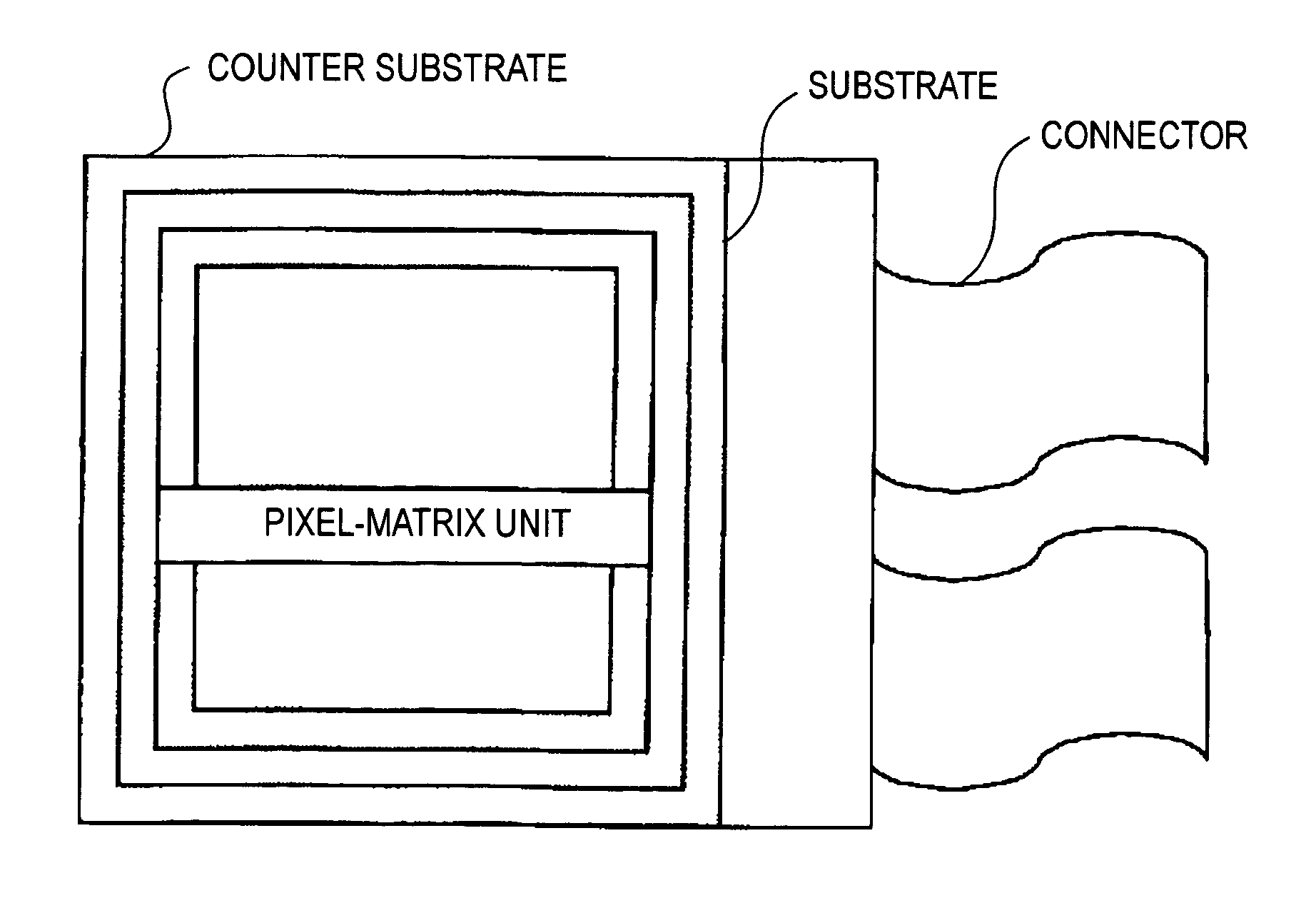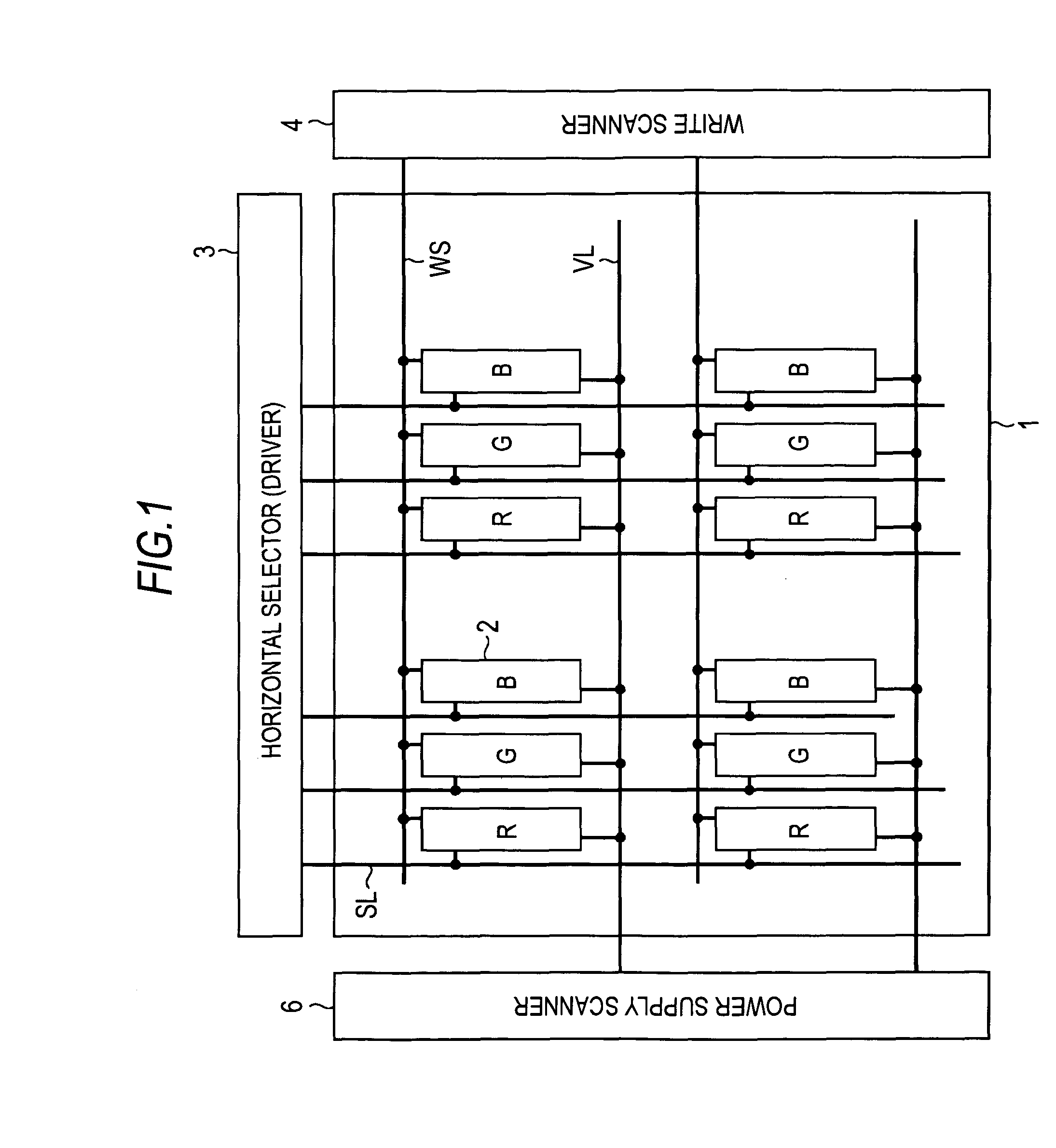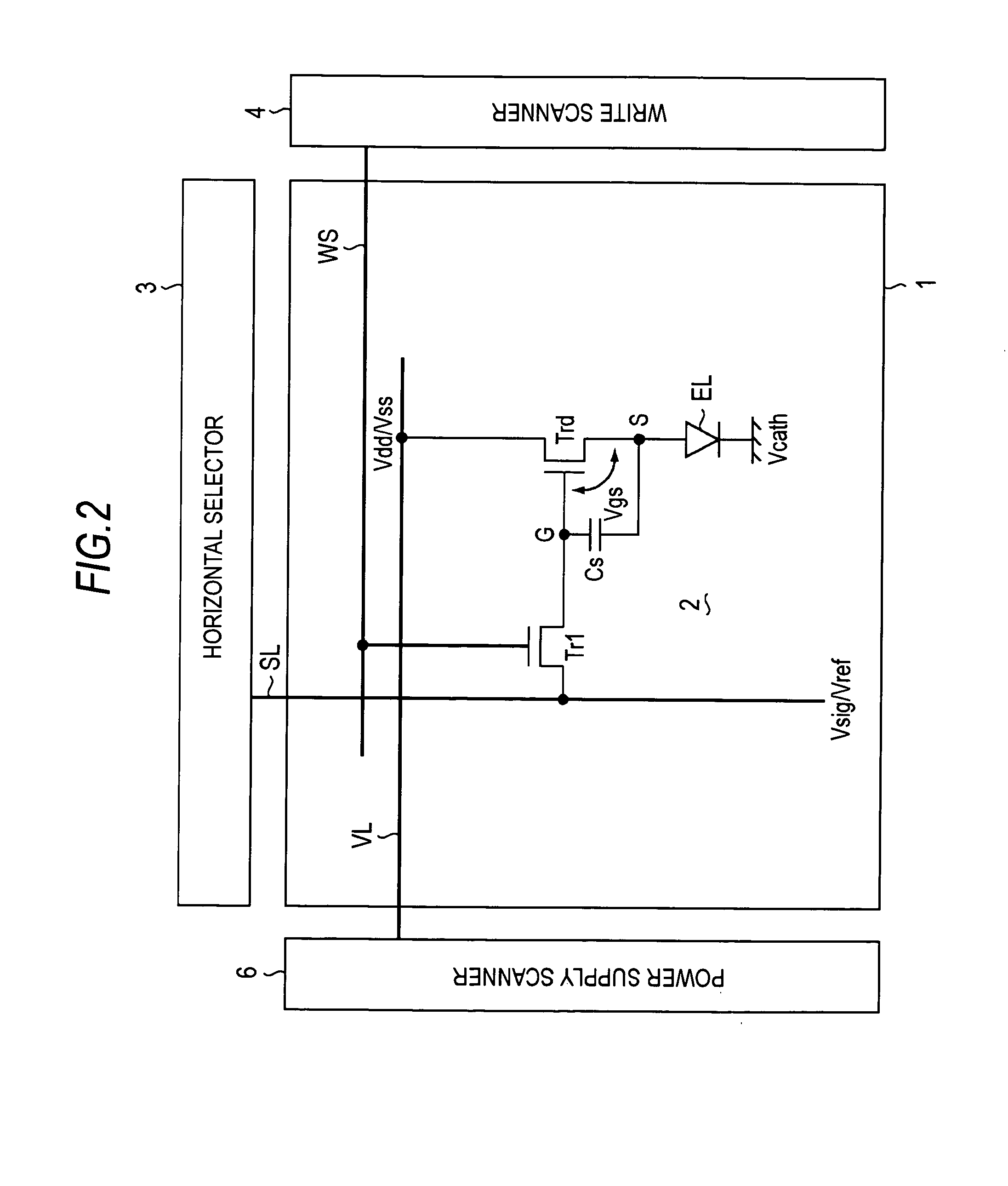Display device and electronic product
a technology of electronic products and display devices, applied in static indicating devices, solid-state devices, instruments, etc., can solve the problems of image quality failure called “burning” and the luminance of the pixel in the organic el display deteriorating with time, and achieve the effect of compensating the luminance deterioration of pixels
- Summary
- Abstract
- Description
- Claims
- Application Information
AI Technical Summary
Benefits of technology
Problems solved by technology
Method used
Image
Examples
second embodiment
[Whole Configuration of a Display Device]
[0090]FIG. 9 is a schematic block diagram showing the whole configuration of a display device according to a second embodiment of the invention. As shown in the drawing, the display device basically includes a screen unit 1, a drive unit and a signal processing unit 10. The screen unit (pixel array unit) 1 has a panel “0” including rows of scanning lines, columns of signal lines and matrix-state pixels arranged at portions where respective scanning lines and respective signal lines intersect and a light sensor 8. The drive unit includes a scanner sequentially supplying a control signal to respective scanning lines and a driver supplying a video signal to respective signal lines. The scanner and the driver are mounted on the panel “0” so as to surround the screen unit 1.
[0091]Each pixel included in the screen unit 1 takes a video signal from a corresponding signal line as well as emits light in accordance with the taken video signal when the p...
third embodiment
[Timing Chart 1]
[0096]FIG. 11 is a timing chart for explaining operations of a display device according to a third embodiment of the invention. In the drawing, a potential change of the scanning line WS, a potential change of the feeding line VL and a potential change of the signal line SL are represented in a time axis common to these lines. Additionally, potential changes of the gate G and the source S of the drive transistor are also represented in parallel to these potential changes. The timing chart is basically the same as the timing chart of the first embodiment shown in FIG. 3. The present timing chart represents operations in the display period in which video is displayed in the screen unit. In the display period, a normal video signal is supplied.
[0097]A control signal pulse for turning on the sampling transistor Tr1 is applied to the scanning line WS. The control signal pulse is applied to the scanning line WS in one frame (1f) period so as to correspond to ling-sequentia...
fourth embodiment
[Operation Sequence]
[0107]FIG. 13 shows an operation sequence of a display device according to a fourth embodiment of the invention. The signal processing unit supplies a normal video signal in the display period in which video is displayed in the screen unit and a video signal for luminance detection is supplied in the detection period included in the non-display period in which video is not displayed. The light sensor performs detection of light emitting luminance in the time division manner over plural non-display periods for detecting light emitting luminance of all pixels included in the display unit and outputting luminance signals. In the shown example, the screen is divided into six from an area 1 to an area 6. In the first non-display period, the detection of light emitting luminance of pixels belonging to the areas 1 and 4 is performed. In the next non-display period, the detection of light emitting luminance of pixels belonging to areas 2 and 5 is performed. In the furthe...
PUM
 Login to View More
Login to View More Abstract
Description
Claims
Application Information
 Login to View More
Login to View More - R&D
- Intellectual Property
- Life Sciences
- Materials
- Tech Scout
- Unparalleled Data Quality
- Higher Quality Content
- 60% Fewer Hallucinations
Browse by: Latest US Patents, China's latest patents, Technical Efficacy Thesaurus, Application Domain, Technology Topic, Popular Technical Reports.
© 2025 PatSnap. All rights reserved.Legal|Privacy policy|Modern Slavery Act Transparency Statement|Sitemap|About US| Contact US: help@patsnap.com



